
Hello dear writer. Step into my lair to learn more about the art of scaring people with words (don’t worry, my lair isn’t haunted….YET).
-insert spooky sound effect here (Please just imagine you hear a bone-chilling song. Perhaps the easily identifiable Psycho riff, or the one that plays whenever Chucky is about to enact some doll-sized carnage?)-
This may shock some people who know me more for writing whimsical queer adult stories about unicorns, dragons, and talking cats, but the very first novel I ever wrote was horror. ‘Rotten’ is my first love, so of course it was a zombie story. It took me nearly 5 years of pantsing (which I do NOT recommend) and I eagerly went in search of critique partners and after that, beta readers for my revised manuscript. I thought everyone else would love to read it as much as I loved writing it.
I was wrong.
Not everyone likes horror. It can be unsettling, disturbing, and downright icky at times.
But it is an important part of our cultures and it taps into something very primal in humans: fear.
I haven’t revisited the genre as a writer since then, preferring to stay in the more comforting worlds of speculative fiction and queer romance. But I learned a lot from my years spent immersed in death, gore, and suspense. I read so many horror novels, watched so many movies, and truly put my heart and soul into my own novel, to the point where I still consider myself a horror buff, though now I can’t actually consume much horror content because having children turned me into a mushy ball of anxiety who can’t handle a good jump-scare.
So, sit back, don’t relax, and let’s talk about writing stuff that will give you the heebie jeebies.
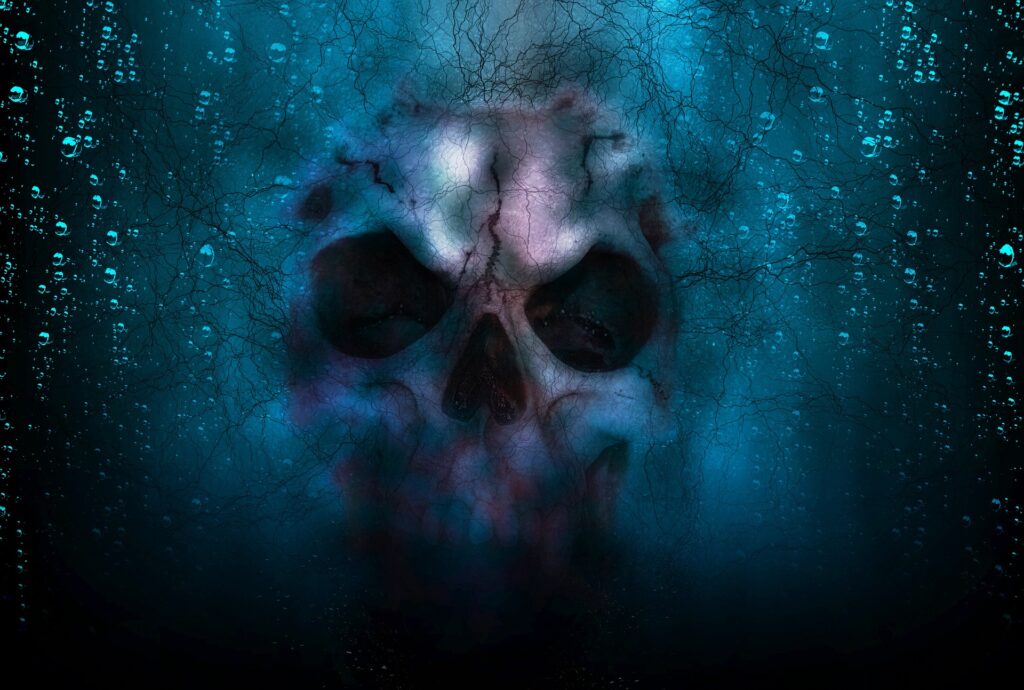
What defines Horror as a genre?
Horror is creating something that inspires fear in others, through various mediums. Common elements are hauntings, vampires, witches, and other spooktacular things; as well as elements rooted in reality, such as psychological and physical distress or even torture.
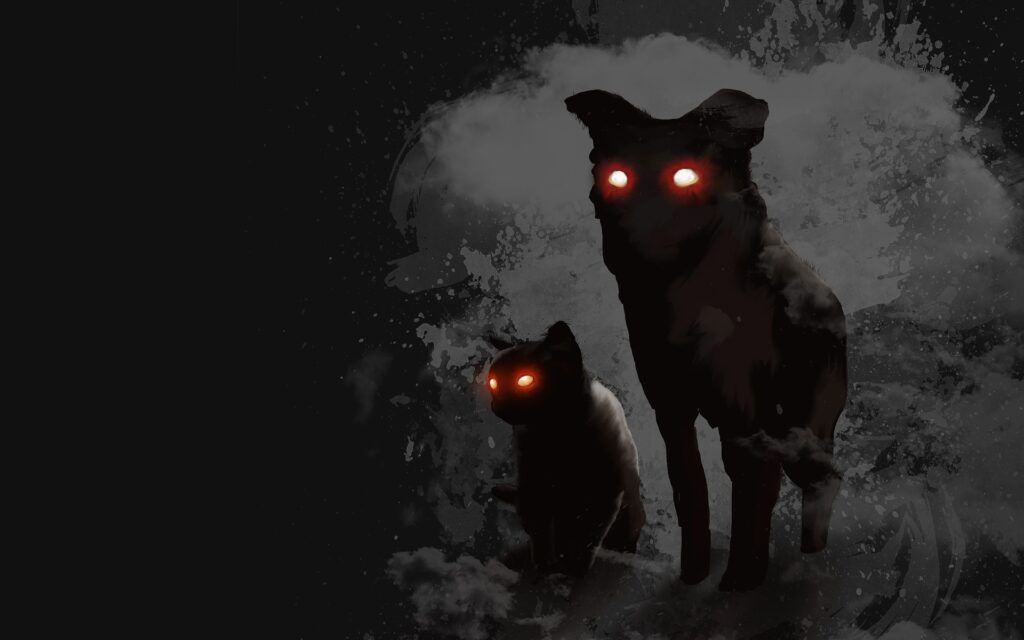
Horror seems simple, so it should be easy right? WRONG!
Just because something is at times ‘scary’, doesn’t mean your story will actually scare someone else.
As Writers Write details, the 3 pillars of horror are The Protagonist, The Setting, and the Monster.
Try to keep that in mind when you’re planning your horror novel.
If you’ve got a great idea for a terrifying creature but your MC is boring, or unrelatable, then it won’t matter to the reader when that Big Bad is revealed. If your setting is off (location, timing, pace, etc.) then you could lose your readers interest without enough action, or lack the all-essential ‘atmosphere’ of fear by setting it in a place that is not moody enough. Not everything needs to be all crumbling castles and abandoned asylums to be effective horror, but it does need to contain those 3 pillars mentioned above.
At it’s core, Horror is as complex and layered as every other genre of writing, despite the fact that it seems fairly easy. To properly write a good horror story, you have to take the same care and attention to crafting it as you would any other novel.
To understand what makes horror tick, we have to know where it came from…
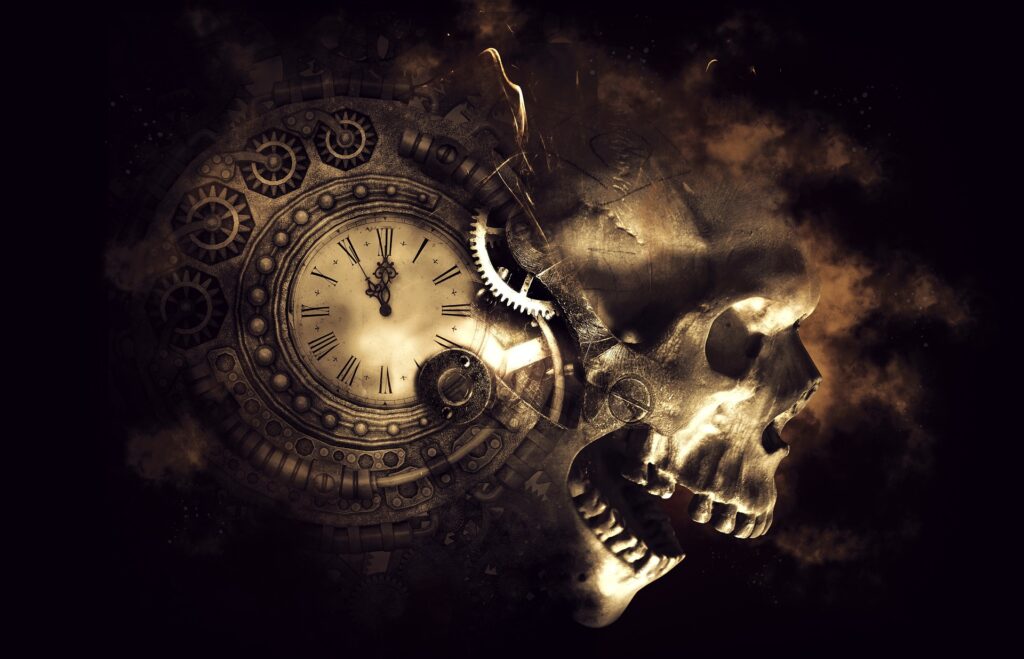
Scary stories: giving people the willies since the beginning of time (probably)
The history of horror goes back to before written languages were invented. People have been telling frightening tales around the campfire for years, so it’s not hard to imagine our distant ancestors sitting in their caves, making each other shriek with tales of vengeful mountain lions, or crazed emus (which are practically the same thing as dinosaurs, and thus just as terrifying).
Because language was strictly oral until approx. 4000 BC, we don’t have any records of folk tales from that time. But we do know tales which contained elements meant to inspire fear were a part of folk literature, which predates written literature.
As for “modern horror” in western cultures, Horace Walpole is considered the inventor of the genre with his 1765 novel The Castle of Otranto, though people often credit Mary Shelley as the pioneer of horror with her famous 1818 novel Frankenstein, which has its own fascinating history .
Some of the earliest horror writers date back to pre-Romantic era Europe, where the Gothic Novel was popularized in the 1790s and were defined by a prevailing atmosphere of mystery and terror, and in the Romantic era the famous American poet Edgar Allen Poe would catapult the genre into mainstream society.
Since then, authors like H.P. Lovecraft, Bram Stoker, Shirley Jackson, Stephen King, Anne Rice, Clive Barker, and many others have brought horror into the 20th and 21st centuries.
Most recently I thoroughly enjoyed Silvia Moreno-Garcia’s MEXICAN GOTHIC (2020), and would recommend it to anyone who wants a fresh, beautiful take on the horror novel.
So now you know what horror fiction IS and where it came from, you will be better equipped to write it yourself! Read on for our 10 tips!
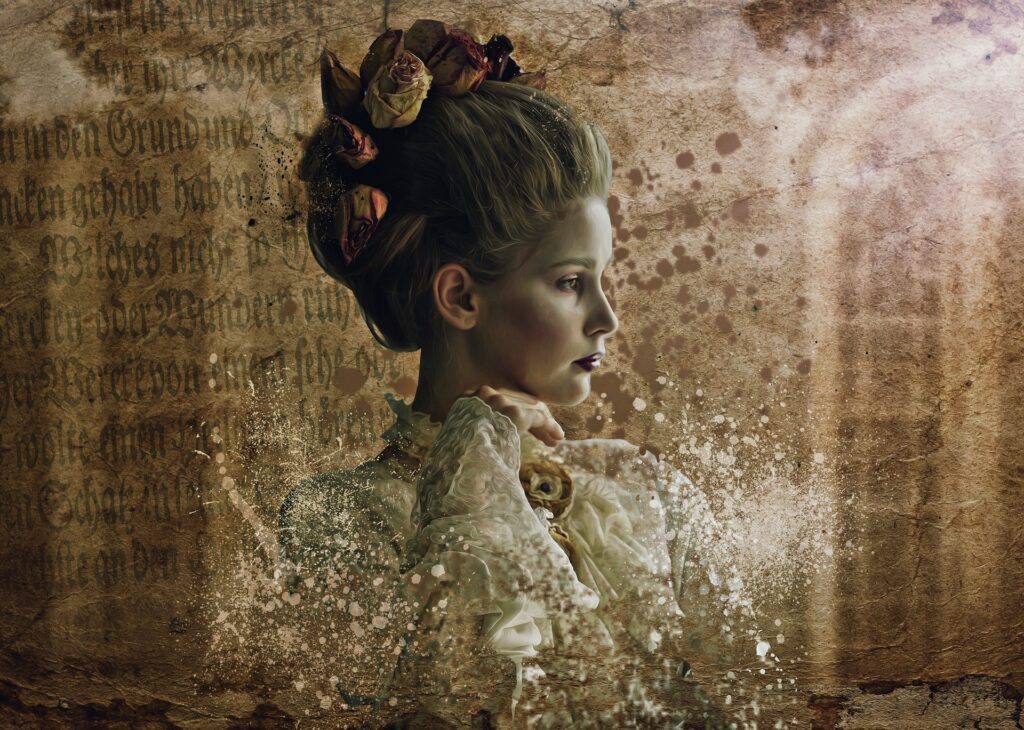
The Motley Guide to writing horror
Are you ready? Good!
Sit back with a warm cup of tea, preferably in a drafty attic somewhere, during a rainstorm (for ambiance), and let’s discuss my 10 tips for writing scary stories.
1. Take inspiration from what frightens YOU
This is probably the most obvious advice, but it needs to be said anyway. There are fairly common fears/phobias which will resonate with many people. By tapping into those fears you’re going to have a well of options to draw from.
Whatever you’re afraid of, whatever sets your own skin crawling, is probably the same things that will make other people afraid, or at the very least: unsettled.
Fear is as natural as love or hunger. To tap into that, you can utilize surface level frights, or delve deeper to more unconscious phobias.
The Diagnostic and Statistical Manual Of Mental Disorders (DSM-5) classifies specific phobias into 5 individual categories:
- Animal: Spiders, snakes, dogs etc.
- Natural: water, heights, storms, climate change etc.
- Blood, injection and injury (BII): needles, blood, invasive procedures etc.
- Situational: claustrophobia (fear of enclosed spaces), flying etc.
- Other: any phobia that doesn’t fit into the above categories.
You can utilize those fears and phobias in your writing craft. What are some of your favorite scary books or movies?
Fun fact: I am not afraid of spiders, heights, or speaking in public. But I do have trypophobia, a fear of holes. Spongebob terrifies me.
Em Van Moore, spider enthusiast
My favorite horror book might be one you wouldn’t even consider “horror”, though I assure you, it is. SPHERE by Michael Crighton is a masterclass in suspense, body horror, and psychological distress. Though it falls under the Science Fiction genre, it is also genuinely terrifying at points. I consider it to be science fiction/horror.
As for straight-up horror, I’m a fan of Stephen King’s novels from the 90s, especially PET SEMATARY and his 1993 collection of stories, NIGHTMARES & DREAMSCAPES.
When it comes to movies, my favorite is THE DESCENT, because I didn’t know I was even remotely claustrophobic until I watched it. The tight spaces, humanoid monsters, and underlying current of dysfunction and betrayal among the women always made my skin crawl more than any of the jump scares.
Honorable mentions go to literally anything with zombies in it (especially the George A. Romero classics, and the 2004 remake of DAWN OF THE DEAD), and the shockingly funny and alternately disgusting 2006 film SLITHER, starring my favorite actor, Nathan Fillion, as the incomparable Bill Pardy. As for zombie novels, I have read my fair share but really loved WORLD WAR Z by Max Brookes, though it may not be considered “horror” in the typical way that many zombie books are.
I tend to shy away from the more cerebral horror content, such as THE SOUTHERN REACH TROLOGY by Jeff VanderMeer (which actually happens to be a favorite of fellow Guild member, A.J. Hanson!) and the film MIDSOMMAR by Ari Astor. These types of stories can sometimes not even be easily identifiable as horror, but they frightened me to my core and left me feeling unsettled for weeks and months after. Now that is the mark of a truly good horror story.
The same things that scare me might not bother you. I gravitate towards body horror, paranormal, and science fiction horror. You may hate those things! So try to find what you like, and draw on that. The more you can tap into your own fears, the more you’re going to write from experience, and your stories will feel more genuine as a result.
2. Read, watch and study horror novels, films, and other forms of media
To know horror fiction you have to have experienced it in an entertainment capacity. What makes a good horror novel can also be what makes a great movie, and watching and (hopefully) enjoying horror content can help you garner ideas, see stereotypes/tropes you want to avoid, and know if your ideas are original, or if it’s been done to death (pun intended).
Of course the structure of a movie and a novel are different, so please don’t try to write your novel to be exactly like a movie. But they’re great for getting inspired and in the mood.
You want to read as much horror as you can, really get a lay of the land. This Reader’s Digest list of the 56 scariest novels of all time is an excellent place to start. #1 on that list is, unsurprisingly, the Master of Horror Stephen King’s novel SALEM’S LOT. I went over some of my own favorites in the section above, and I’d love if you left a comment or Tweet about which horror novels, poetry, and movies you love!
We can’t discuss scary stories without bringing up a work of fiction that has often been cited as the scariest book you’ll ever read…
THE HOUSE OF LEAVES by Mark Z. Danielewski.
As Thea James of the Booksmugglers says in her review:
Ohmyfreakinggoodness. House of Leaves is probably one of the scariest, most jarring books I have ever read.
This is a surreal, post-modern novel. It is strange and powerful read that holds the reader hostage–literally–until that last page is turned. And, to be honest, even longer after that.
Thea james, booksmugglers (2008)
I highly recommend you give this masterpiece a try. I have it on my own bookshelf, but it sits there, partially read, haunting me because I had to stop reading it when it gave me nightmares. Yes, I am a horror buff who is also a wuss.
3. Make your characters 3-dimensional
The outward signs of fear are easy to distinguish, but where they come from is actually what is going to frighten your own readers. Sure, your characters can be experiencing something as subtle as goosebumps on the arms, or as dramatic as outright screaming, but your reader won’t care if there isn’t a person behind those expressions of emotion.
Don’t just give your readers something to be afraid OF. Give them someone to be afraid FOR.
Some of the very best horror stories have people who are so 3-dimensional they feel real.
For example, you’re right there with the family as they go through the horrific haunting and possession of their daughter in THE EXCORCIST by William Peter Blatty. The building suspense as the child’s behavior becomes more erratic is easy for people to relate to. Their family dynamics and the love of a parent for their daughter makes the trials they’re going through feel that much more rooted in reality. If this had been written as just “hauntings are scary” you’d end up with one of the dime a dozen KU stories by aspiring authors who failed to really capture the intricacies of the genre.
Yes, hauntings are scary. But we want to care about the people being haunted almost as much as we’d care about ourselves if we were going through it.
Another way to ensure your characters aren’t flat is to avoid stereotypes and surface-level relationships. If you stick with a archetype that’s easily identifiable you run the risk of boring your reader. The jock. The nerd. The clever outsider. These are all stereotypes that can work well when your intention is to subvert the genre expectations (such as the movie THE CABIN IN THE WOODS, which I loved and I don’t care if you agree with me), but when done with an attempt at sincerity you can stray into the realm of predictability and “tiredness” (I expand upon this point further in the next tip about avoiding negative stereotypes, though it is more specifically about racism and sexism in the horror genre).
The same goes for surface level relationships. Sure, you might have a young couple stranded alone on a dark road, but if there’s no love between them, or no history, then your reader won’t be invested enough when the man with a hook for a hand finally gets one of them. Perhaps they’re fighting? Perhaps they’re engaged, and looking forward to the future? Give us layers. Readers want a book onion, not a book pancake. Layers!
One of the most disturbing elements of the film MIDSOMAR is the relationship between the main character and her abusive boyfriend. It adds a layer of discomfort and heartbreak that underlines all the other horrific events in the movie, leaving audiences chilled.
4. Avoid negative stereotypes (and stereotypes in general)
The horror genre has a long history of villainizing marginalized groups, and genuinely horrific victimization of women.
From the “savage” tribesman monster stereotype, to twisting the very notion of traditional Vodou into an invented religion of horror, and even the tokenism of minority characters, horror has not been good to people of colour. Avoid these stereotypes at all cost, as they are offensive to entire groups of people, and villainize cultures that are no more “monsterous” than your own. Sometimes even less so.
And please, please don’t just use women as props for gore and death.
Grace Lemon of Scene and Heard NU put it perfectly:
According to Laura Mulvey’s groundbreaking 1975 essay “Visual Pleasure and Narrative Cinema,” traditional cinema places the spectator in a masculine viewing position, perpetuating a male gaze that forces female characters to maintain passive roles as the objects of desire. In many cases, the horror genre takes this concept to a new level, using female victimization and violence inflicted on female characters as a form of punishment meant to satisfy male spectators.
grace lemon, Scene and heard NU
Similar themes can be found in novels as well, and are continued to this day. We can do better, as writers, and we can write women and POC characters as well rounded human beings, who are not merely just utilized as cattle being led to the slaughter in our fictional works of horror.
5. Pick your subgenre
Horror has an amazing ability to cross genres. Sometimes it’s hard to tell you’re even reading a horror novel until it’s too late! (Just kidding. Or am I?)
The best horror stories can be difficult to distinguish as such, because they have so many different elements and the fear they instill can be so subtle, yet effective.
For a great breakdown, please check out Brandon Cornetts article “Types of Horror Fiction: 10 Subgenres With Recommended Books For Each”. He goes into much further detail about the individual subgenres, so it’s worth a thorough read.
Those sub genres are:
- Comedy horror
- Dark fantasy
- Gothic
- Lovecraftian
- Paranormal
- Post-apocalyptic
- Psychological
- Psychos, slashers, serial killers
- Sci-fi horror
- Supernatural
A story can be more than one genre. Sometimes the very best ones contain multiple elements, borrowing themes to create a melting pot of a novel. When done right, it can be beautiful. When done wrong, it can be chaotic and nearly unreadable.
I recommend you pick a subgenre, then learn the tropes and the elements of it. Really get to know it. Then, you can expand upon that.
6. Root it in something real
The surreal can be unsettling and frightening, but sometimes basing fear on something rooted in the real world is the best approach. Things don’t have to be completely horrifying and fantastical to inspire fear in your readers.
Familial relations can be as scary as a giant spider monster.
The sinister stare of a human serial killer can be as scary as the elaborate concoctions of an ape mad scientist.
Simplicity can be as effective as a complex web of intrigue and horror.
If your story isn’t rooted in something real you will run the risk of alienating your reader because they can’t relate.
7. Remember your audience
Decide who your target audience is right from the start. This is going to help you craft your story with them in mind. Is it going to be for younger audiences, or adults? The elements of your story may be similar for both audiences, but not identical. For example, you can have much more gore, abuse or psychological distress in a novel meant for adults. For children or YA you may stick to more palatable elements, such as monsters, post-apocalyptic landscapes, or even comedy horror.
Remember that your audience may be invested in your story because of a certain element, for example: paranormal (or whatever sub genre your work falls into). If you suddenly throw in some Lovecraftian or slasher aspects into an established paranormal world you risk alienating your reader.
And yes, you can write “clean” horror. R.L. Stein’s novels are meant for a young audience, and yet they’ve been frightening kids and teens for decades. The popularity of R.L Stein, Christopher Pike and other writers is proof that you can do horror without resorting to an R-rated gorefest. HorrorTree has a great article about How To Write Horror for Kids and Teens.
On a personal note: I’d like to ask anyone intending to write a horror novel for children or YA audiences to consider steering clear of needle/injection phobia elements. As a nurse, I’ve encountered a lot of children and adults with intense needle phobias, and some of them have cited early exposure to movies or books as reasons why they are afraid (though a lot of them had bad experiences with shots, but that’s not something we can influence through our fiction writing).
8. Don’t forget to foreshadow!
Foreshadowing can be the perfect way to create tension in your story. Sprinkle crumbs of detail throughout, so once the big reveal happens it will feel earned and exciting.
For example, if your story is set in a quaint little town meant to look innocent to outsiders, there could be ways you foreshadow something sinister is waiting — which will keep your audience turning the pages because they want to know what’s really going on.
Perhaps all the townspeople wear the same colour, and later it’s revealed to be tied to a cult ritual.
Perhaps a house sends shivers down your MC’s spine every time they walk past (yes it’s cliche, but it can work if done well).
Perhaps there is some hidden meaning behind a seemingly innocuous detail, such as the fungi growing throughout the old building that is the setting of the majority of the novel MEXICAN GOTHIC. The author, Silvia Moreno-Garcia, does an excellent job of foreshadowing in her novel. I won’t include any spoilers, but after only a few chapters it’s obvious there’s something significant about the mold and fungi, which kept me reading feverishly into the night because I just had to know what it all meant. The end reveal was well worth the insomnia.
If you do foreshadowing right then a reader will think back to what they’ve already learned, and seemingly innocent things will suddenly take on new meaning. It’s a great way to amp up the horror in any work of fiction.
9. Set realistic expectations for yourself
Not everyone is going to like your horror novel. There. I said it.
There isn’t always a market for horror in fiction, it can be subject to unforgiving waves of falling out of favor, then a rise in popularity which can leave writers frustrated and dejected. Some authors, like the master himself, Stephen King, will always be in style. But newcomers to the genre may struggle, and that is okay.
Write for yourself, and write for the audience you hope is out there. If you’ve crafted something beautiful and terrifying it doesn’t matter if it will have success as a traditionally published novel. Don’t go into the genre expecting to be the next Clive Barker or Anne Rice. But please don’t disregard horror altogether, just because it might not be as commercially viable as some evergreen genres (like romance, historical or kidlit).
10. Find your community!
You’re not the only person who loves a good scare! There’s many wonderful communities for fans of horror, and creators of horror content.
Probably one of the best ways to start is through the Horror Writers Association.
On the Absolute Write message boards there’s a forum specifically for the horror genre, however you need a membership to view and post.
You can also search on Twitter for the hashtags #HorrorWriter #HorrorCommunity #HorrorFans and there are many groups you could join on that platform.
Head on over to Facebook and search for Horror Writer groups, where you’ll find some of them have over 17k members (Horror Writers Association), and even the smaller ones have thousands of members (The Horror Writers Group, 2.9k members; Horror Writers Ink, 5.8k members).
Even a primarily visual platform such as Instagram is in on it with the hashtag #HorrorWritersOfInstagram !
Break a leg (or five) on your horror writing journey!
Now that you know some of the tips and tricks to writing horror, you’re better equipped to delve into a genre that is near and dear to my heart. Start with the characters and research first, then use your research to do awful things to the characters your readers will grow to love.
Myself and the other members of the Motley Writers Guild want to wish you a happy and safe Halloween. May your ghouls be grammatically correct and your ghosts merely children wearing sheets with holes cut in them.
If you enjoyed this post, please subscribe to The Motley Writer’s Guild for notice of new blog posts and writerly news.
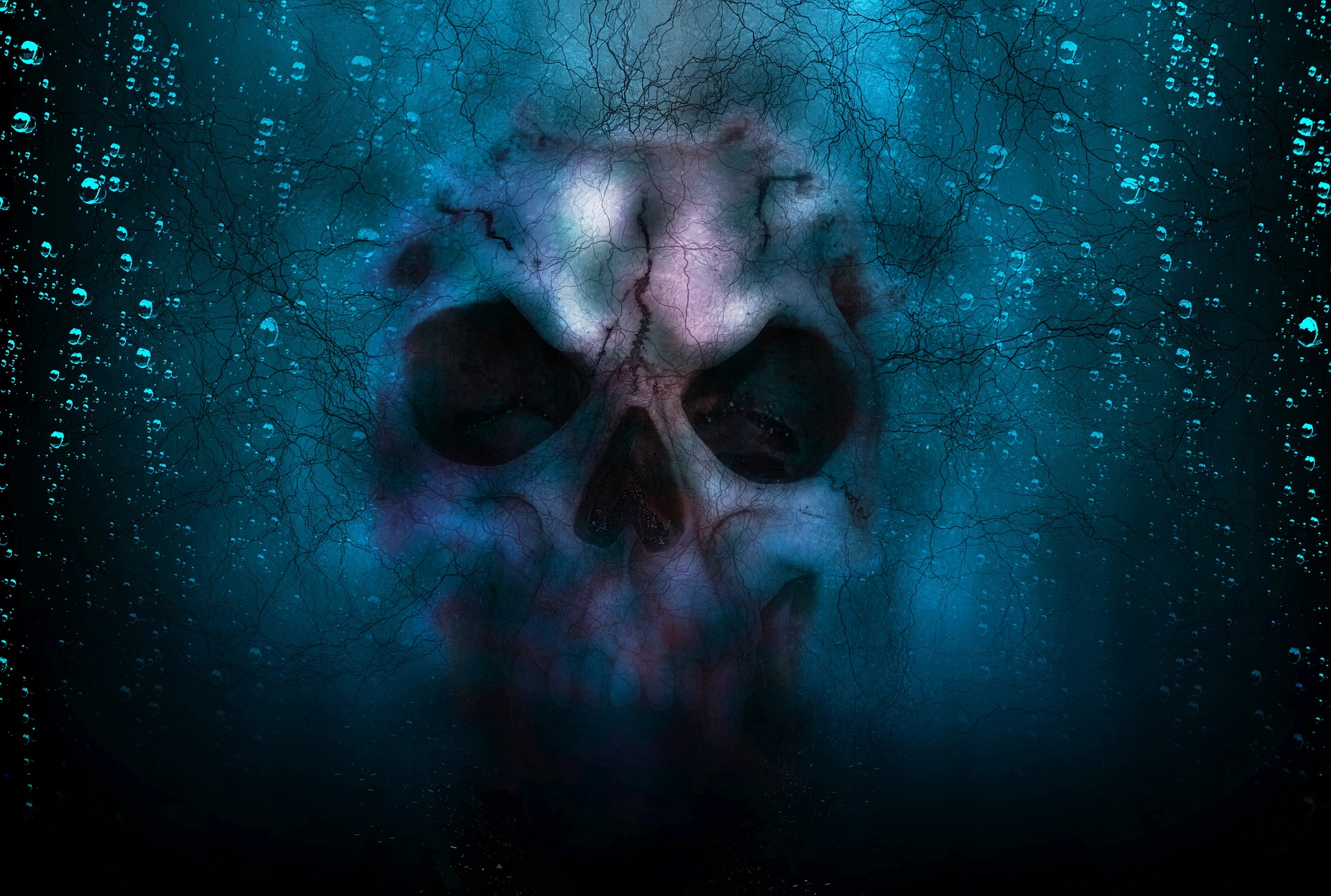



[…] comments or on twitter @ADMoseleyRdWrtr! Also, don’t forget to check out last month’s creepy Halloween post by […]